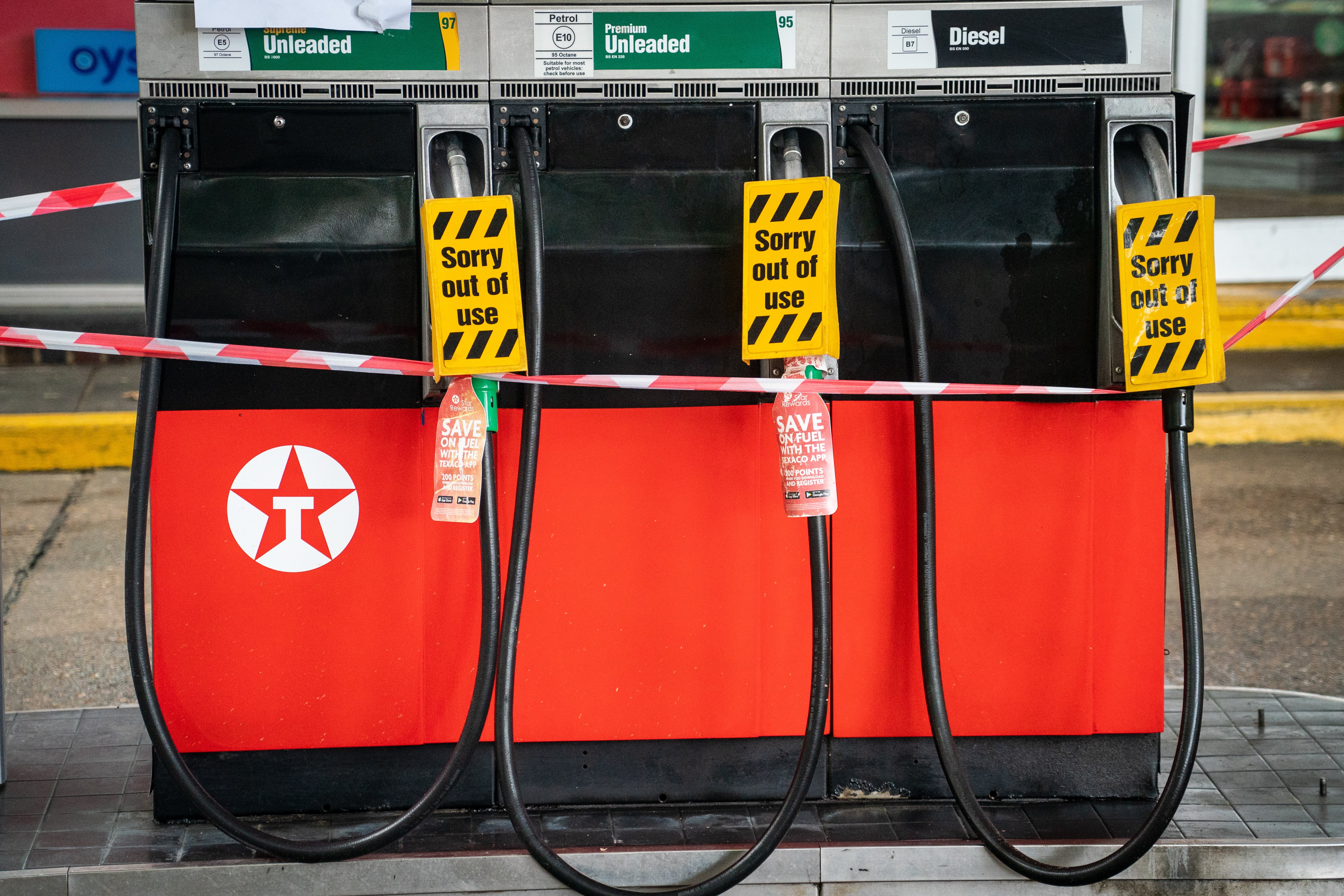Fuel supplies lower in London and the South East than rest of country
Government figures show filling station storage tanks in the capital were just 27% full at the end of the day on Sunday.

Your support helps us to tell the story
From reproductive rights to climate change to Big Tech, The Independent is on the ground when the story is developing. Whether it's investigating the financials of Elon Musk's pro-Trump PAC or producing our latest documentary, 'The A Word', which shines a light on the American women fighting for reproductive rights, we know how important it is to parse out the facts from the messaging.
At such a critical moment in US history, we need reporters on the ground. Your donation allows us to keep sending journalists to speak to both sides of the story.
The Independent is trusted by Americans across the entire political spectrum. And unlike many other quality news outlets, we choose not to lock Americans out of our reporting and analysis with paywalls. We believe quality journalism should be available to everyone, paid for by those who can afford it.
Your support makes all the difference.Fuel supplies at petrol stations in London and the South East remain lower than the rest of Britain.
Figures from the Department for Business, Energy and Industrial Strategy show filling station storage tanks in the capital were just 27% full at the end of the day on Sunday, compared with 37% across the whole of Britain.
The situation was only slightly better in the South East (33%).
Average stock levels in Britain sank to 15% on September 25, two days after panic buying began.
In early 2020 – before demand was affected by coronavirus restrictions – stock levels averaged around 43%.
The figures also show that sales of fuel have slowed from an average of 35,900 litres per filling station on September 24 to 11,600 litres on Sunday.
Luke Bosdet, the AA’s fuel price spokesman, said the statistics indicate that the crisis lasted for 17 days, and it was not until Sunday when “normality” returned.
He went on: “The persistence of that road fuel frenzy has been a surprise and it will be necessary to re-plan future responses to such events, taking into account the immediate impact of messaging and social media when a forecourt gets resupplied and whether spend limits are adequate when the cost of fuel is so high.
“It was clear that, as soon as a fuel station had a delivery, the world and his wife descended on it to top up.
“Also, at around 136p a litre, a £30-limit on fuel sales bought only 22 litres of petrol in a typical 55-litre tank.”